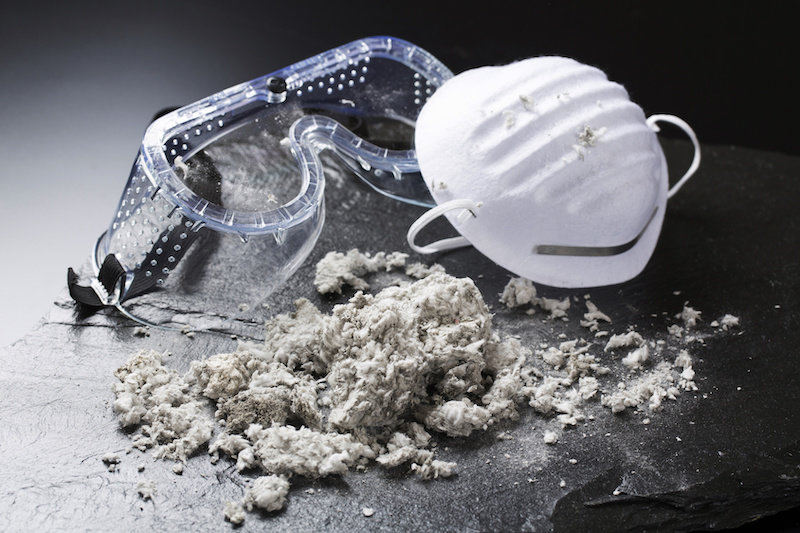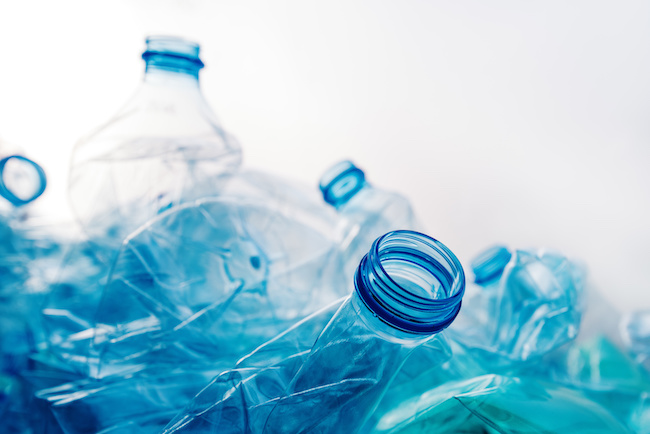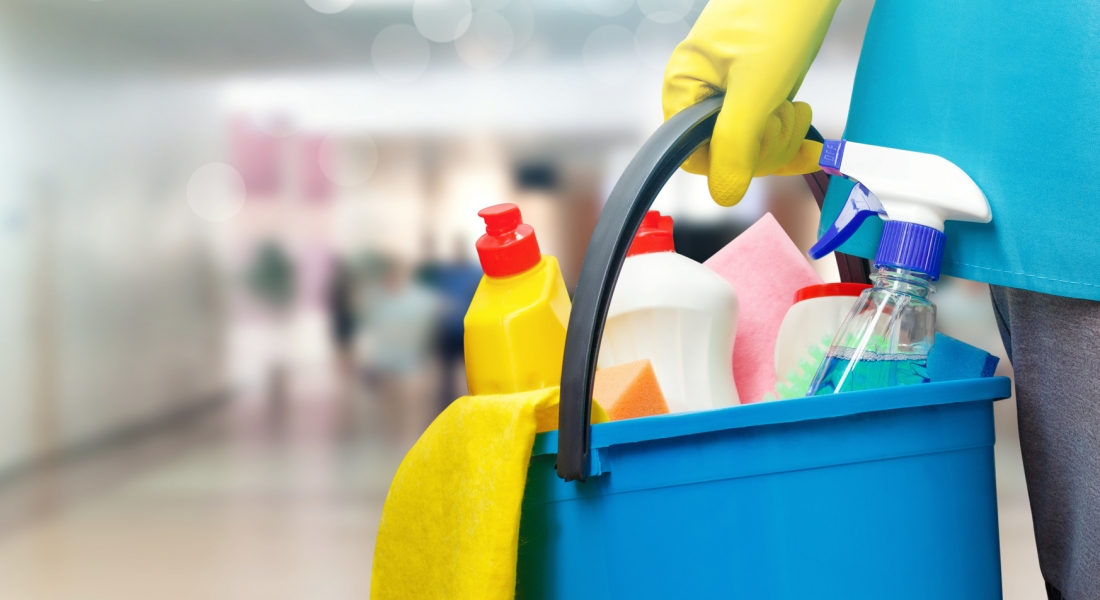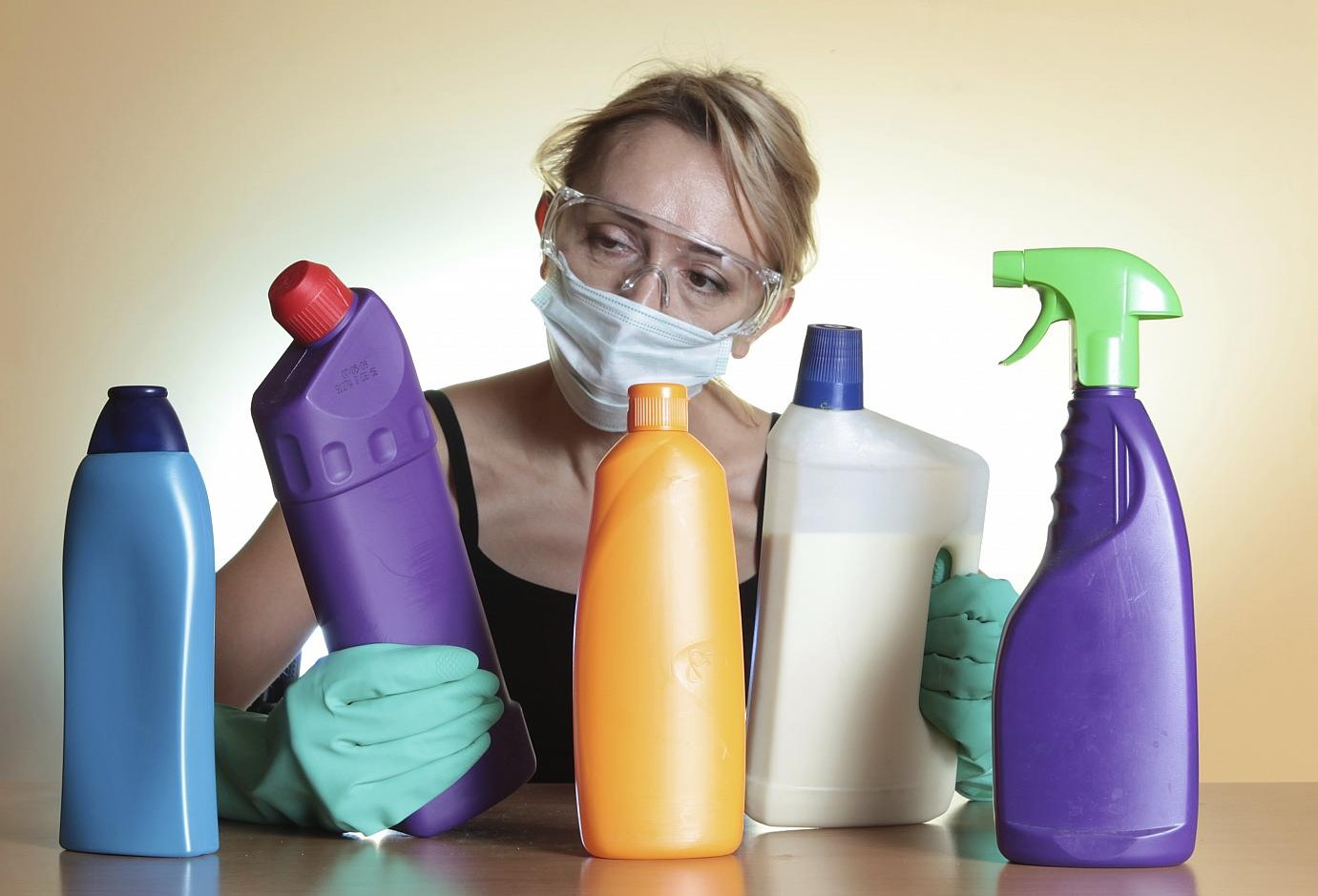Take a look around your home. Do you know what’s in your household goods and products? Some chemicals can harm your health if too much gets into your body. Becoming aware of potentially harmful substances and clearing them out can help keep you and your family healthy.
“There’s a range of chemicals that you can be exposed to in your home, generally at very low levels,” says Dr. Andrew Rooney, a toxicology and risk expert at NIH. Possible toxic substances can be found in building materials, cookware, cleaning products, shower curtains, furniture, carpet, and other common items.
Not all chemicals are harmful. In fact, most substances in our environment are likely safe, explains Dr. Heather Patisaul, a neuroscience and toxicology expert at North Carolina State University. “Only a small subset is probably toxic,” she says. “Although that’s worrisome, there are many simple things you can do to help minimize your exposure.”
These widely used chemicals may hide anywhere from skin cream to a frying pan. In this issue, we’ll explore where you can find them in your home and what to do to avoid them.

Asbestos
A mineral that is resistant to heat and chemical corrosion and can be mixed with other materials to strengthen them. Though asbestos use has declined, it has not been banned in the US. Building materials still legally may be up to one percent asbestos, and old buildings are more likely to contain higher percentages. Homes should be checked for asbestos before any renovation—check roof and floor tiles especially. Asbestos fibers can be inhaled and accumulate in the body and cause inflammation, scarring, respiratory diseases, and cancer.
Benzyl benzoate
A common insecticide that is used medically to kill lice or scabies. It is also used as a food additive for flavor, in fragrances, and in plastics. It is a suspected neurotoxin.
Bisphenol-A (BPA)and Bisphenol-S (BPS)
Used to make transparent, hard plastic known as polycarbonate used for baby bottles and linings of metal cans. BPS is a common substitute for BPA since public outcry reduced use of BPA in plastics. Studies are showing the chemicals are similarly toxic. BPA/BPS are endocrine disruptors, and exposure may cause obesity, reproductive cancers, and infertility.
DEHP
A common class of phthalate—a liquid plasticizer used in hydraulic fluids and PVC plastic. It may leach into food and water through plastic and could cause damage to reproductive organs, lungs, kidneys, liver, and fetuses.
Endocrine disruptors
The endocrine system regulates hormones and the glands that secrete those hormones in the body. Endocrine disruptors (a.k.a. endocrine modifiers or hormone disrupters) are chemicals that interfere with the endocrine system by mimicking or inhibiting natural hormones. They can cause reproductive damage and have been implicated in cancers of the reproductive system.
Formaldehyde
(A.k.a. methanal, methyl aldehyde, or methylene oxide) A smelly, colorless, flammable gas used in pesticides, building materials, textiles, cosmetics, and home goods. The “new” smell of a mattress, piece of clothing, or car comes from formaldehyde. It is a carcinogen and suspected gastrointestinal, immune, nerve, reproductive, respiratory, and skin toxicant.
Lead
An abundant metal that may be found in a home in the form of old paint on toys or walls, in pipes, or in makeup. Lead is a neurotoxin that accumulates in the body and can cause brain damage and behavioral issues, and is especially harmful to children. There is no safe dose of lead.

Polybrominated diphenyl ethers (PBDEs)
Used as fire retardants in foam furniture, carpet padding, electronics, plastics, textiles, and building materials. PBDEs build up in people’s bodies over time and have been associated with tumors, delayed brain development, and thyroid issues.
Parabens
A preservative in pharmaceuticals and cosmetics, parabens are used in toothpaste, shampoo, moisturizers, and shaving gels. Parabens are endocrine disruptors that can be absorbed through the skin, and they have been linked to cancer.
Phthalates
A softening agent used in plastics and in a variety of beauty and skincare products. Studies have identified phthalates as endocrine disruptors. They may also cause liver and kidney lesions, lead to a higher risk of certain cancer, and exacerbate asthma and allergies in some children.
Per- and polyfluoroalkyl substances (PFAs)
PFAs are a class of chemicals including PFOA, PFOs, and GenX. They repel water and grease, so they’re used in the manufacturing of nonstick cookware, stain-resistant clothes and carpet, and even the inside of microwave popcorn bags. PFAs accumulate in the body over time and can lead to cancer, heart disease, and immune system damage.
Perifluorinated chemicals (PFCs)
PFCs repel grease and water, and are heat-resistant, so they’re popular in many products from fast food containers to paints, flooring, and furniture. Studies have linked them to cancer, thyroid issues, damage to immune and reproductive systems, high cholesterol, hypertension, and birth defects.
Volatile organic compounds (VOCs)
A category of chemicals that evaporate into the air and react with sunlight, which pollutes indoor air. The word “organic” means that these chemicals contain the element carbon. Formaldehyde is an example of a VOC that’s likely to be in your home. Some VOCs can be lumped under the term “fragrance” (though not all fragrances are VOCs). VOCs may cause eye, nose and throat irriation in the short term, and cancer, liver damage, kidney damage, and nervous system problems in the long term. VOCs pose a particular risk to infants and fetuses.

How to Keep Toxic Chemicals Out of Your Home
The least we can do is start with our own homes. There are some basic steps you can take to minimize exposure to toxic chemicals at home.
Mix your own cleaning supplies.
Don’t buy chemical-filled cleaners, which may make your house seem clean but really make it more toxic. You can clean just as effectively with vinegar, baking soda, and lemon juice. Or buy some truly green cleaning products, including laundry soap, from companies like Meliora K, The Simply Co, or My Green Fills.
Buy used or organic clothes.
You know that new clothes smell? It is actually toxic residue left over from the manufacturing process, and it is not something you want to be taking into your body. Buy organic fabrics whenever possible, avoid certain production methods such as ‘distressed’ jeans that rely on exorbitant quantities of chemicals, and stick with used clothing as much as possible that has already had a chance to off-gas.
Go zero-waste, or at least plastic-free.
While zero-waste may be too extreme (or impossible, depending on where you live), then you can at least cut down on the amount of plastic you use. Single-use plastics are a sickening waste of resources that mostly end up oceans and waterways, where they do not biodegrade but continue to emit the toxic chemicals that are used in their production. Be prepared to refuse plastics; carry your own reusable water bottle, plate, cutlery, coffee mug, grocery bag, etc.
Use the EWG Skin Deep database.
When shopping for skin care products of any kind, use the Environmental Working Group’s Skin Deep database. With more than 60,000 products listed, it can give you the real low-down on what’s contained in a particular product and what it means for your health. It’s a great resource to have.
Take your shoes off.
No matter how vigorously you wipe your shoes at the front door, they will still track in all kinds of disgusting toxic stuff. Shoes bring pesticides and herbicides into the house. TreeHugger writer Melissa Breyer pointed out that “the ‘track-in’ exposures of these chemicals may exceed those from residues on non-organic fresh fruits and vegetables.” Shoes are also responsible for 98 percent of the lead dust found in homes. Ick. Just leave them on the porch or in the garage.
Open your windows.
When you keep your windows closed, you seal yourself up with all the chemicals emitted from within the house, particularly if your house is new and has not had sufficient time to off-gas. Carpets, doors, paint on the walls, flame retardant coatings on new furniture – these are not things you want staying in the house. Open those windows to let the fresh air flow through and flush it out.
Get rid of your carpets.
Wall-to-wall carpets feel good underfoot, but they’re bad. Made of petroleum byproducts and synthetics such as polypropylene, nylon, and acrylic, they are usually treated with stain repellents, antistatic sprays, artificial dyes, antimicrobial treatments, and other finishes. The backing is often vinyl or synthetic latex, and the padding contains PVC or urethane. All of this means that carpets are a pretty major culprit if you’re trying to detox your home. A much healthier option is to replace regular carpets with hardwood, tile, or non-toxic wool carpeting.
Stop using non-stick cookware.
The chemicals used to create a non-stick or water-repellent surface are called ‘poly- and perfluoroalkyl’ substances. They are highly persistent in the body and the environment, and have been linked to a wide range of health problems including infertility, thyroid disease, organ damage, and developmental problems. It’s a steep price to pay for having one’s eggs slide out of the pan easily. Go for non-coated pans instead, such as cast iron, which works wonders when used properly.
Shop the 'Clean Fifteen.'
The Clean Fifteen is a list of foods, released by the Environmental Working Group, that are least likely to have pesticide contamination, even when grown conventionally. By shopping this list as much as possible, you can minimize personal and household exposure to toxic pesticides even if you cannot afford to buy organic produce. These include many foods with natural protective coatings, such as avocados, pineapple, sweet corn, mangoes, kiwi, grapefruits, etc.



